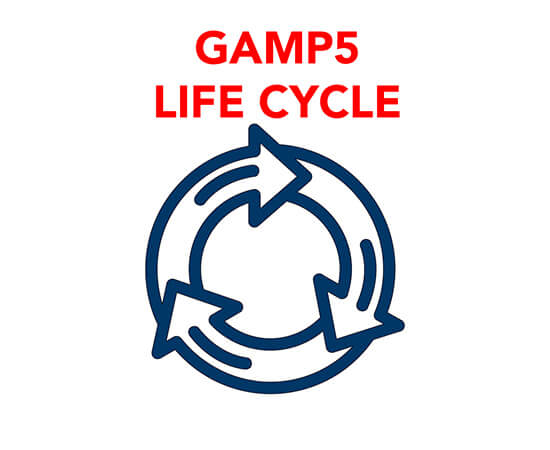We talk a lot about life cycles, but have you used this approach to implementing a new system, especially a large one, such as Real Time Monitoring System (RTMS)? If you are familiar with GAMP5, you probably have used a life cycle approach or at least considered it.
The 5th edition of Good Automated Manufacturing Practices (GAMP5) was published by the International Society for Pharmaceutical Engineering (ISPE). It is not a set of regulations, but instead a pragmatic framework for the implementation and validation of computerized systems in the pharmaceutical industry following best practices that do align with applicable regulatory requirements such as GMP Annex 1 and 21CFR11.
GAMP5 uses a life cycle approach to designing the system, meaning it provides a comprehensive and organized approach to planning, designing, developing, verifying, implementing, and retiring the system. This controlled approach allows for numerous benefits, so let’s talk about the top 5!
1. Gives You A Comprehensive Understanding Of Your System
First and foremost, developing your RTMS using a life cycle approach gives you a deep understanding of your system and its application within your cleanroom. Because you consider every stage of the system’s life, previously daunting tasks, such as verification, will become less overwhelming as it is built into your system and processes.
Moreover, GAMP5 advocates for involving all levels of stakeholders. This includes departments such as IT, who are heavily impacted by your system but seldom involved in the decision making process. An additional benefit to this approach is building buy-in and investment within your team. If they are involved in the decision making process and their input valued, they will feel more apt to appreciate the system as it is developed.
2. Reduces Risk
Using a life cycle approach to develop and implement your RTMS also reduces risk in your cleanroom. As a bonus, the way it reduces risk aligns with GMP Annex 1.
In 2022, GMP Annex 1 was updated to meet modern demands. One of the new points made throughout the update was to be proactive vs reactive by focusing on designing your Contamination Control Strategy (CSS) into your cleanroom versus the other way around. When you follow a life cycle approach, you are abiding by this standard.
You are being proactive in developing your Quality Risk Management (QRM) and Quality Management System (QMS) versus reactive when issues arise.
This overall reduces the risk to your cleanroom as you can address problems early on in the development stage through a holistic approach.
If you take the life cycle approach, you will also be able to conduct a technical or scientific assessment of the system. This allows you to make evidence-based decisions in regards to monitoring your cleanroom and identifying high risk areas.
3. Improves Compliance
Here at LWS, we are big fans of designing regulatory compliance into your RTMS. Developing and implementing your RTMS according to a life cycle approach allows you to build regulatory compliance into your RTMS. Moreover, it enables scalable flexibility so you can adapt your computerized systems to your needs as you grow while remaining in compliance because it is built into your design.
GAMP5’s life cycle approach specifically advocates for creating processes that are repeatable and traceable as well as using evidence-based practices to design a QMS, which is in line with many current regulations.
4. Decreases Costs
One of the major benefits of using a life cycle approach to implementing your RTMS is decreasing costs. Developing a new RTMS is a costly endeavor so taking the time to make it more fiscally responsible wherever possible is critical.
When you design the entire life of your system, you will be able to predict problems before they arise. It is much more cost effective to address problems before they are physically in place.
5. Makes It Easier To Develop Your Contamination Control Strategy
As aforementioned, regulations like GMP Annex 1 are putting heavy emphasis on designing your cleanroom around a CSS versus building the cleanroom then designing a CSS. Thus, having a fully formed CSS becomes critical to regulatory compliance as well as general best practices for operating a cleanroom.
If you develop a comprehensive CSS that takes into account your regulatory requirements, User Requirement System (URS), hardware, software, industry risks, and other applicable considerations, you can design the entire life cycle of your RTMS around the CCS.
How You Can Implement A RTMS With A Life Cycle Approach
Shockingly, it is very easy to get started implementing a RTMS according to a life cycle approach: you just need to call us.
Our team are experts at determining which system will work best for your organization and providing you with ample resources to make the process as simple as possible, such as URS templates.
We also follow GAMP5 best practices and take regulatory compliance very seriously. This includes helping you decide on your needs and applicable information, as well as being the one to install the RTMS and walk you through how to use it. We believe the difference between a successful implementation and an unsuccessful one is customer education.
This is your system and if you do not know it in and out, then it will not work. You won’t get the most out of it.
So if you are ready to get started implementing a RTMS with a life cycle approach and a vendor who is dedicated to GAMP5 best practices, just contact us today.


